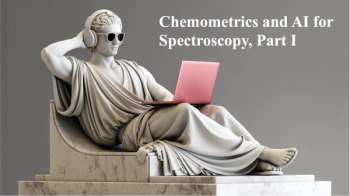
Revolutionizing Tissue Analysis: Femtosecond Double-Pulse LIBS with Machine Learning Breaks New Ground
A recent study presents a new technique that combines femtosecond double-pulse laser-induced breakdown spectroscopy (fs-DP-LIBS) with machine learning (ML) algorithms to significantly enhance tissue discrimination and signal quality, paving the way for more precise biomedical diagnostics.
A team of researchers from the University of Kassel, led by Thomas Baumert, recently showed how using femtosecond laser-induced breakdown spectroscopy (fs-DP-LIBS) coupled with machine learning (ML) algorithms can improve tissue analysis. Their study shows that using both in conjunction with one another proved to be effective in discriminating against different types of animal tissues (1).
Laser-induced breakdown spectroscopy (LIBS) is a well-established technique for chemical composition analysis, traditionally relying on single laser pulses to generate atomic and molecular emissions (1,2). However, the integration of femtosecond double-pulse configurations has introduced unprecedented improvements, allowing for a fivefold increase in signal intensity compared to single-pulse setups at comparable energy levels (1).
In their study, the researchers analyzed thin biological samples, achieving great results with a pulse delay of 1100 picoseconds (ps) (1). This configuration yielded the highest signal-to-noise ratio (S/N) for identified spectral lines, enabling more precise detection of tissue characteristics.
Integrating machine learning algorithms was key to this study. In their study, the researchers used artificial neural networks (ANN) and random forest (RF). Machine learning algorithms help researchers sort through complex data sets, allowing them to categorize information and discover patterns in the data (3). In this study, ANN and RF helped analyze the complex spectral data, allowing the researchers to discriminate between tissue types.
For the experiments, fresh bovine liver and muscle tissues were procured from a local butcher, cryosectioned to maintain integrity, and subjected to LIBS analysis. By freezing the tissue samples rapidly, researchers ensured minimal crystal formation, a crucial factor for obtaining reliable results (1).
The double-pulse configuration allowed the researchers to access additional spectral information without increasing total pulse energy. Both ANN and RF algorithms showed marked improvement in prediction accuracy with double-pulse data. Liver tissue predictions achieved an enhancement factor of 19% (ANN) and 9% (RF), while muscle tissue saw even more substantial gains—36% (ANN) and 56% (RF) (1).
Using double-pulse LIBS in their study was another decision that had positive ramifications for their study. Double-pulse LIBS can amplify the signal intensity and minimize ablation, which makes it suitable for biopsy samples (1). The approach also provides a pathway to explore additional spectral features, crucial for comprehensive tissue characterization.
The findings carry significant implications for fields like biomedical diagnostics and tissue engineering. With enhanced discrimination between tissue types, the technique holds potential for real-time, non-invasive analysis in clinical settings (1). Moreover, the study highlights the scalability of combining advanced spectroscopy with machine learning, paving the way for further innovations in analytical chemistry (1).
This study was an introduction to double-pulse LIBS with machine learning. The researchers stated that future studies can look into using their method to analyze a broader range of biological samples and explore its application in detecting pathological changes in tissues (1).
As Thomas Baumert and his team have demonstrated, the fusion of femtosecond LIBS with artificial intelligence (AI) is poised to transform tissue analysis, setting a new standard for precision and efficiency in spectroscopic diagnostics. This research not only advances the capabilities of LIBS, but it also underscores the transformative potential of interdisciplinary collaboration in tackling complex scientific challenges.
References
- Ciobotea, E. R.; Sarpe, C.; Zielinski, B.; et al. Signal Enhancement with Double-pulse LIBS on Biological Samples and Better Discrimination of Tissues through Machine Learning Algorithms. Spectrochimica Acta Part B: At. Spectrosc. 2024, 222, 107063. DOI:
10.1016/j.sab.2024.107063 - Shen, L.; Tian, L.; Tian, D. Laser Induced Breakdown Spectroscopy Combined with a Tuned Back Propagation Algorithm for Oil Crop Straw Combustion Smoke Detection and Traceability. Spectroscopy 2024, ASAP.
https://www.spectroscopyonline.com/view/laser-induced-breakdown-spectroscopy-combined-with-a-tuned-back-propagation-algorithm-for-oil-crop-straw-combustion-smoke-detection-and-traceability - Microsoft Azure, Machine Learning Algorithms. Microsoft.com. Available at:
https://azure.microsoft.com/en-us/resources/cloud-computing-dictionary/what-are-machine-learning-algorithms#:~:text=Machine%20learning%20algorithms%20are%20pieces,make%20predictions%20or%20categorize%20information . (accessed 2024-11-12).
Newsletter
Get essential updates on the latest spectroscopy technologies, regulatory standards, and best practices—subscribe today to Spectroscopy.





